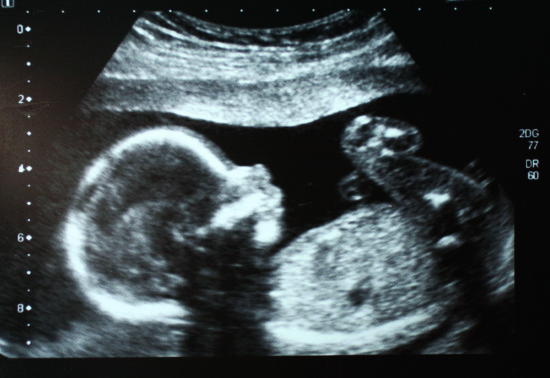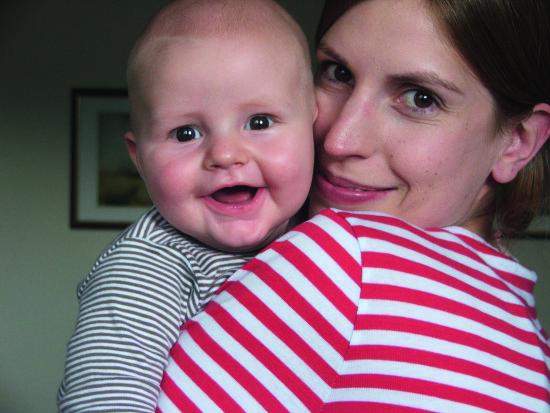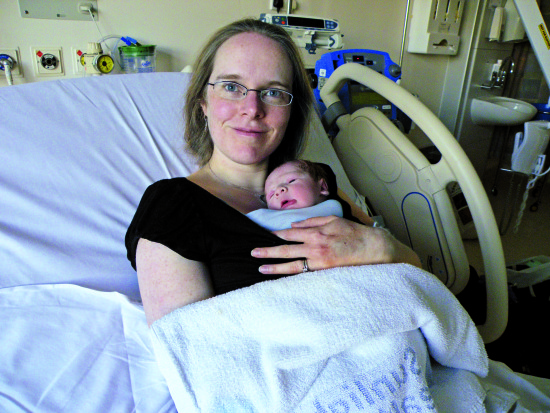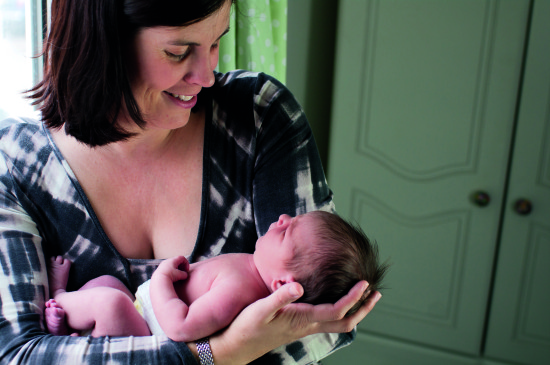During pregnancy, one thing you’ll be thinking about is where to give birth. Here we discuss the pros and cons of the three main options – birth in a midwife-led unit, hospital or at home

In the UK, there’s a range of options for where to give birth – though this will of course depend on where you live, your health and your pregnancy.
Usually known as a birth centre, midwife-led units may be attached to, or ‘alongside’, a hospital, or ‘freestanding’, often in a different town to the nearest maternity hospital.
They are frequently small, allowing more comfort and intimacy, and the emphasis is on natural birth with a possibility that the same small team of midwives will look after you before, during and after the birth.
Guidance from the National Institute for Health and Care Excellence (NICE) has reinforced your right to choose where you have your baby. It suggests that women with uncomplicated pregnancies should plan to give birth in a midwife-led centre or at home rather than in hospital.
They may have birth pools, with many women finding that warm water helps them deal with pain in labour, meaning they are less likely to need an epidural.
Women with the lowest risk of complications should be encouraged to consider booking for care in a midwife-led unit, as the care in these settings is as safe for babies as hospital care.
However, if a problem does emerge you may decide you need to transfer to hospital. With an alongside birth centre the transfer is just up the corridor while in a freestanding unit it may mean an ambulance.

Naomi Minoudis (pictured) had her baby, Eli, at the Lewisham Birth Centre, which is part of the Mother and Baby Wing of University Hospital Lewisham. She was able to walk around when she wanted to while in labour, though spent most of her time in the birth pool ‘because it was so relaxing’.
She needed no pain relief or intervention and puts this down to ‘the calm setting and the midwifery-led care. The midwives also looked after us well after the birth, helping me to establish breastfeeding.’
Until now, however, midwife-led units have not always been well known. Dee Fischer, who had her two children, James and Emily, in hospital, only found out through her local NCT branch that such an alternative existed. ‘My midwife team only told me about hospital options,’ she says.
But this is set to change with the NICE guidelines saying that women with the lowest risk of complications should be encouraged to consider booking for care in a midwife-led unit, as the care in these settings is as safe for babies as hospital care.
The guidelines set out the evidence about comparative benefits and risks of many aspects of care including alternative places for birth.

The labour ward of a hospital has the medical facilities that can help should an emergency arise. Obstetricians, anaesthetists and neonatal specialists are all on hand. There’s an operating theatre if you need a caesarean and you will also be able to have an epidural.
The downsides are that you’re unlikely to know the midwives, the labour ward may be busy and your partner might have to leave soon after the birth.
You’re also more likely to have medical care and procedures, such as an epidural, ventouse, forceps or an unplanned caesarean than in a midwife-led centre or in your own home. Many women, however, are reassured by the hospital setting.
Jenny, an NCT member from Warwickshire (pictured), says that hospital was ‘the best place’ for her. ‘I had hoped to have a water birth at home but my waters broke when I was 36 weeks pregnant and I also ended up having an episiotomy and suction with a ventouse because my baby, Alfred, was in distress.’
For some women, including those with medical conditions, it is safest to give birth in hospital with specialists on hand.

‘I loved being in my own home!’ enthuses NCT member Karen Cornish of Norfolk & Norwich branch (pictured), who had water births at home with daughters, Martha and Elsie.
‘My husband, Simon, was more comfortable too and could get drinks and snacks for him, me and the midwife whenever required. Both births were very gentle and peaceful being in water and sharing the warm water after they were born was a lovely way to start bonding with skin-to-skin contact. I didn’t need any pain relief with either labour and there was hardly any tearing.’
What were the downsides? ‘Having to empty the pool afterwards,’ Karen laughs. ‘That was quite a few trips with the bucket!’ Making sure you have a pump is a way around that particular obstacle, but there are other things you may want to think about.
The main practical one is the need to transfer to hospital if complications arise or you want an epidural. Also, a home birth is not recommended if there is a known medical problem, for example, pre-eclampsia or a baby in a breech position.
According to the Birthplace in England research study of nearly 80,000 women, there is a slightly increased risk to the baby if you are a first-time mum planning to give birth at home.
Find out as much as possible about the options available to you locally by talking to other mums and midwives, and by entering your details and preferences into the interactive Find and Compare tool created by Which? and BirthChoiceUK. It will then come up with the ‘best fit’ and ‘good fits’ for you.
Planning where to give birth is personal and depends on lots of factors, including what your local NHS can offer.
But you don’t need to decide early in pregnancy. In fact, if you want to wait and see how you feel in labour, this can often be arranged. It’s an approach progressive midwives often encourage as it’s flexible and enables you to decide at the time, depending on how you feel.
Also, remember that labour doesn’t always go according to plan. ‘It is sensible for each woman to make the choice she wants,’ says Elizabeth Duff, Senior Policy Adviser at NCT, ‘but also to have a “plan B”.’
Talk to other NCT members about their experiences, antenatal teachers, and either visit our website or call our helpline for more information.
You can change your mind at any time, even once labour has started. What’s most important is that you feel comfortable and relaxed in a place which is safe for you and your baby.